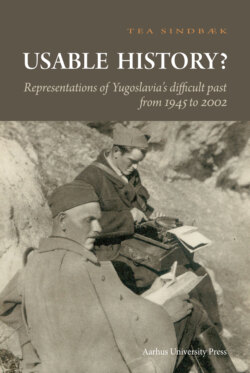Читать книгу Usable History? - Tia Sindbaek - Страница 14
Ustasha
ОглавлениеThe NDH was ruled by Croatian fascists, the Ustasha movement, which was in fact a marginal group that was dependent on German and Italian support to stay in power. The Ustasha government proved to be the most brutal of several excessively violent occupation and quisling regimes in Yugoslavia during the war. The Ustasha were characterised mainly by their fanatic anti-Serbianism, their cult of the Croatian state, and unconditional obedience to their leader, or ‘poglavnik’, Ante Pavelić. The Ustasha were conservative and patriarchal, and idealized an imagined traditional Croatian lifestyle. Though their ideology was not predominantly founded on religion, they developed and profited politically from ties to the Catholic Church. While the church’s main representatives cooperated with the Ustasha administration and never openly condemned the regime, other parts of the Catholic clergy actively supported and even joined the Ustasha.
In the NDH, Serbs, Jews, Roma and all opponents of the regime were subject to brutal persecution. Shortly after the proclamation of the new state on the 10th April 1941, the Ustasha instigated an exceedingly violent campaign against the Serbian population, constituting about 1.9 million, or approximately one-third of the population of the NDH.3 In Bosnia the Ustasha courted the Muslims, claiming they belonged to the best of Croats. Some Muslims joined the Ustasha militias and participated in massacres against Serbs, particularly in the Bosnian Krajina, Eastern Bosnia and Herzegovina.4
The Ustasha’s massive persecution of the Serbian population severely destabilised the NDH. The mass violence forced the Serbian population to flee into forests and mountains, where they were to form the initial cores of the Partisan and Chetnik resistance movements within the NDH. This meant that large areas of the state came under Partisan or Chetnik control during the war, and the Ustasha proved unable to crush the riots and control the state’s territory. On its establishment, the Ustasha regime was supported by parts of the Croatian public, who had felt oppressed in the Serbian dominated interwar Yugoslavia. However, its brutal politics cost the Ustasha government most of the popularity it had initially gained from providing a Croat national state.
During the summer of 1941 spontaneous revolts broke out in many Yugoslav areas. From July and August some of these became part of centrally organised uprisings, led by either Chetniks or Partisans.
